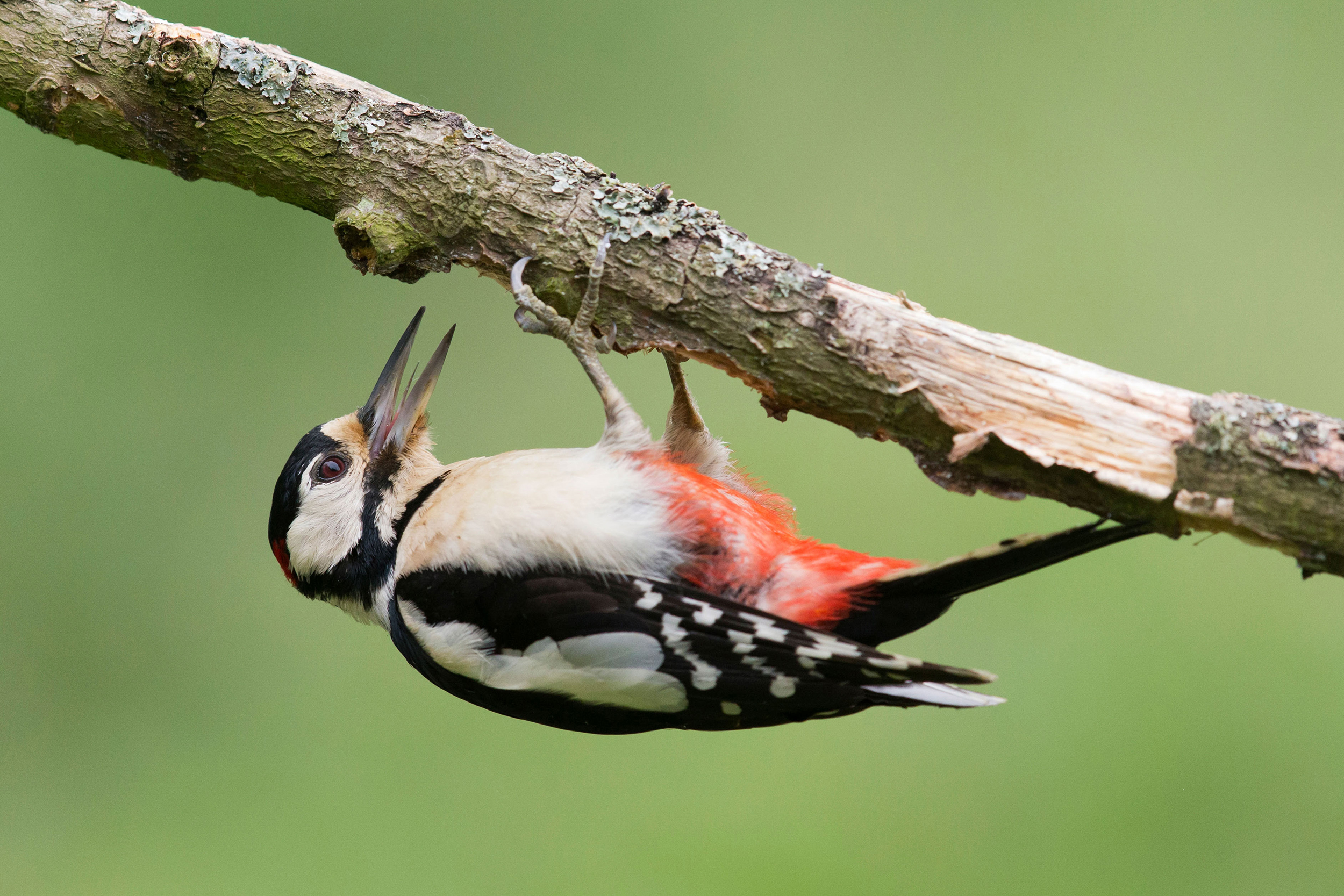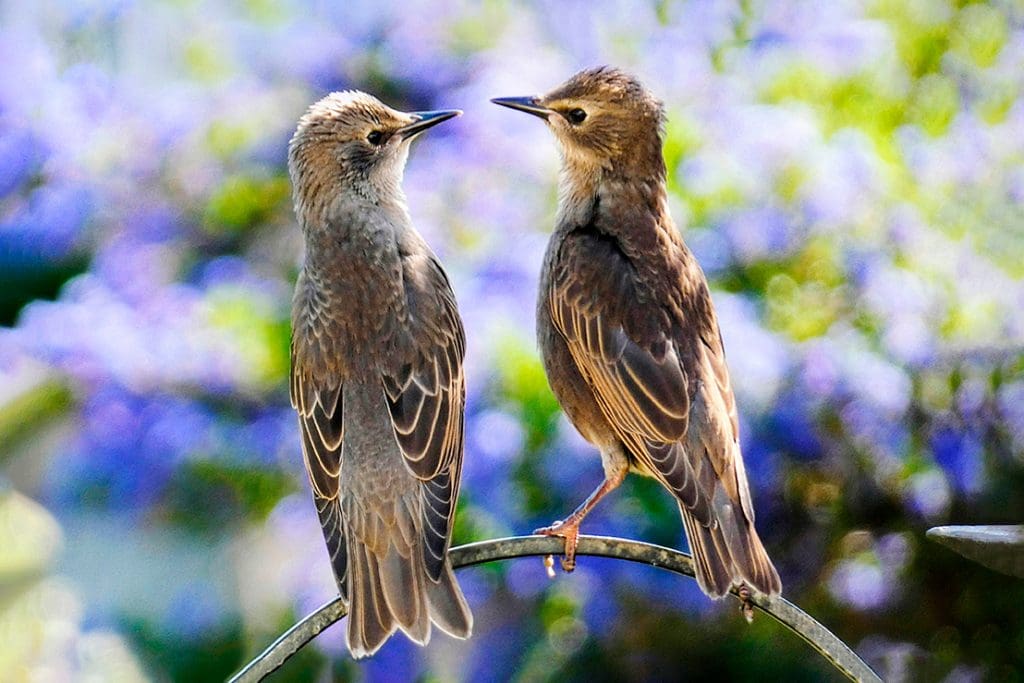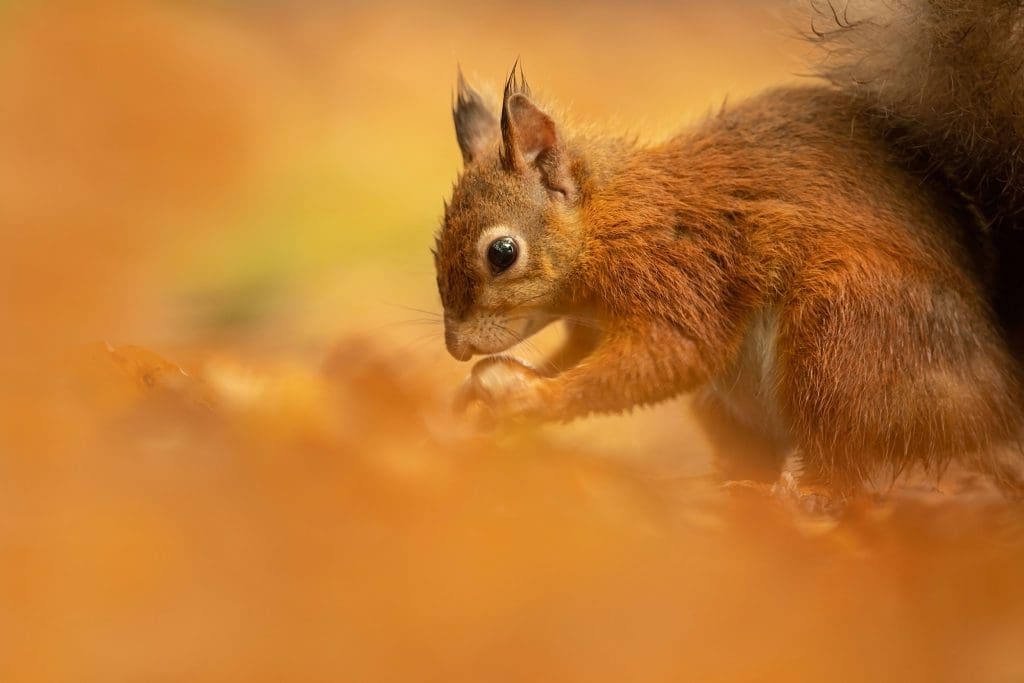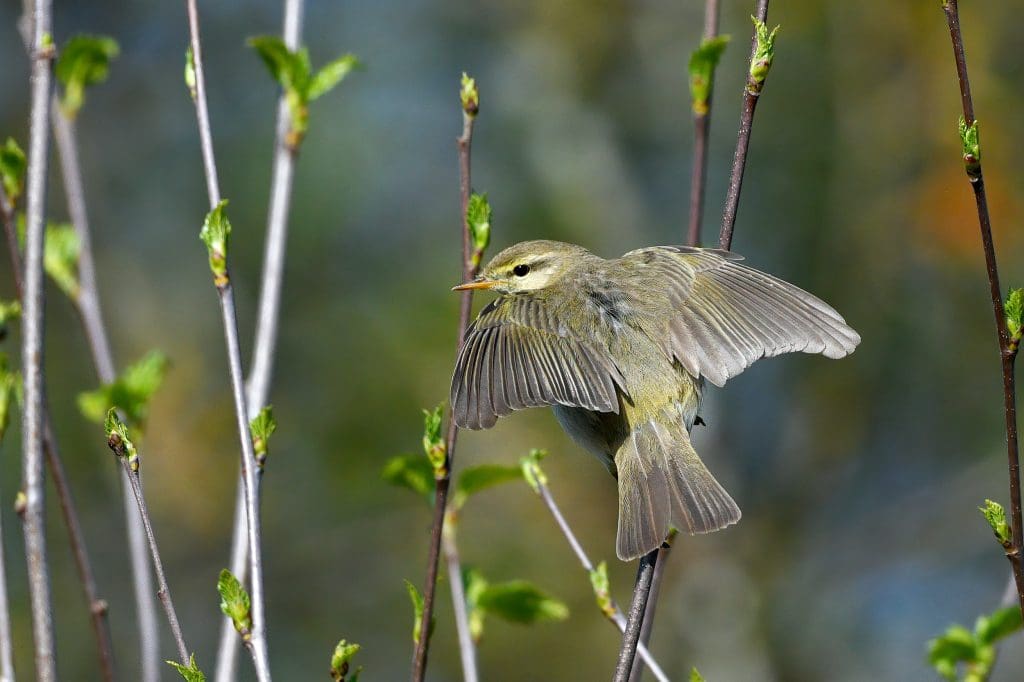These charismatic birds all hold their bodies close to vertical tree limbs and climb to obtain food from the bark. They all have short legs, covered with protective scales, together with long, sharp claws that enable each of them to hold on. The claws of Treecreepers tend to hook on to bark irregularities, while Nuthatches and woodpeckers grip.
When foraging, woodpeckers and Treecreepers are adapted only for upward hoppings. Nuthatches are most unusual for being able to climb trunks both upwards and downwards headfirst – the only birds in the UK to do so. All these species depend on a year-round supply of food available from trunks and surfaces, a rich resource not available to competitors, except some species of tits.
Did you know? The collective noun for Treecreepers is a ‘spiral’, named after the way they work in a spiral around trunks in search of food.
The Treecreeper feeds almost entirely on invertebrates, including a lot of spiders. It finds sustenance by closely examining the fissures and crevices that it comes across while creeping upward. Its tail is long and stiffened and is used as a brace, allowing the bird to rock back if necessary, but the Treecreeper can also ‘free climb’, foraging along the underside of branches.
Its feeding method is based on using its long, slightly curved and laterally flattened bill for probing. When a Treecreeper reaches its desired height, it flies down again to start lower in the next (or same) tree.
Woodpeckers also work upwards and use the tail as a pivot, but they differ from Treecreepers by their ability to be destructive. They can, and do, often glean from bark in the same way as the Treecreeper, but their powerful bills enable them to chip away loose bark and other matter and, of course, to excavate. They eat all kinds of invertebrates and other meat as well as many seeds, which they can open easily with powerful pecks.

Nuthatches cannot excavate wood, but their sharp, chisel-like bills also enable them to break open seeds. In the autumn they hoard them in gaps in the bark to consume through the winter, but they concentrate on invertebrates in summer – presumably looking from above enables them to spot things missed by other gleaning competitors.
They hold on to trunks with one foot above the other, one to hang, the other for support. The short tail is held out of the way and they characteristically lean outward to scan their surroundings. They often also forage on the ground.
Listen to this feature here:
You might also like

Your photos – autumn/winter 2023

Capturing colour in autumn


